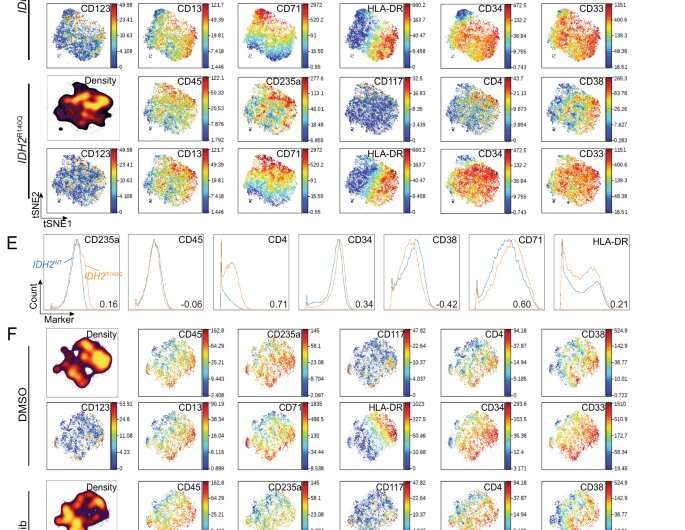Cell signaling targets in leukemia

Mutations in the enzyme IDH (isocitrate dehydrogenase) are found in 15–20% of acute myeloid leukemia (AML) cases. IDH mutations have been shown to impact cellular differentiation and DNA and histone methylation, but little is known about how they affect cell signaling responses.
First author Kathryn Sunthankar, MD, P. Brent Ferrell, MD, and colleagues studied differentiation and signaling responses in an IDH mutant cell line and found augmented responses to inflammatory signals, in particular the cytokine IL-1beta.
Using phospho-specific flow and mass cytometry, bulk and single-cell RNA sequencing, the researchers dissected single-cell signaling and changes in gene expression and differentiation in IDH mutant cells. They demonstrated that targeted inhibition of the IL-1beta—NF-kappaB signaling pathway in IDH-mutated leukemia cells from patients reduced IL-1beta responses and induced cell death.
The findings, reported in the journal Leukemia, support a critical role for IL-1beta signaling in IDH-mutated leukemia and identify this pathway as a potential target for novel AML therapies.
More information: Kathryn I. Sunthankar et al, Isocitrate dehydrogenase mutations are associated with altered IL-1β responses in acute myeloid leukemia, Leukemia (2021). DOI: 10.1038/s41375-021-01487-9




















